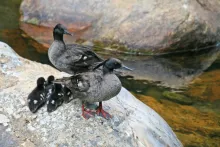
Brazilian Merganser (Mergus octosetaceus)
Species name
- Dutch name:
- Braziliaanse zaagbek
- English name:
- Brazilian Merganser
- German name:
- Dunkelsäger
- French name:
- Harle huppard
- Scientific name:
- Mergus octosetaceus
Scientific classification
- Order:
- Anseriformes
- Family:
- Anatidae
- Onderfamilie:
- Merginae
- Genus:
- Mergus
Description
- Description:
The Brazilian mergansers are generally silent birds, but may make barking calls in certain situations.
Male:
The Brazilian merganser is generally slightly smaller than the European middle merganser. In its range, the Brazilian merganser can only be confused with the cormorant (Phalacrocorax olivaceous), because both have a similar dark plumage and match the size of the body. The Brazilian merganser, however, has the characteristic merganser beak. It flies very fast and usually has a low height. The two sexes are largely identical.Female:
The females are only slightly smaller and the breast is less pronounced.Head, neck and upper body have a dark brown plumage that glistens slightly emerald green. The individual feathers of the woman are hanging on the shoulders. The chest and lower body are light brown and have a very fine gray mark. The beak is black, the legs are red and the iris is brown.Juvenile:
With young animals, the breast is gray and lacks the down cap. The cheeks and neck are whitish. They also have a white eye ring. The upper bill is dark with a light-colored tip, while the lower bill is red / brownish. Chicks are black at the top of the body and have white spots on the flanks, on the trunk and on the feathers. The face shows the black and white drawing that is typical for merganser. However, it lacks the typical red-brown color transitions for merganser chicks. The beak is black. Feet and legs are dark gray, the jobs black. The iris is gray.
- Behaviour:
Foraging mainly takes place in the morning and in the evening. For the most part of his remaining time, the Brazilian merganser is sitting in the shadow of rocks, trunks or branches. Because of the dark feathers the Brazilian merganser is difficult to recognize by the running water
Standard Measurements
- Body Length (cm):
- The male (drake) of the Brazilian Merganser measures approximately 49-54 centimeters. The female measures approximately 49-54 centimeters.
- Body Weight (grams):
- The male will weight about 600-700 gram. The female will weight about 600-700 gram.
The weight is notoriously variable and can only be used as indication!
- Note:
The breeding season starts in July and chicks can be observed from the end of July to August. The only litter so far was in a tree cave 25 meters above the ground. The nest material consisted only of fine, decaying wood. While the female was brooding, the male remained close to the water. During the breeding period, the female broke the brood only once a day and then left the nest for one to one and a half hours.
- Breeding:
- The female Brazilian Merganser usually lays from 4-6 Light creamy white eggs and incubates them for days.
- Artificial incubating:
The ideal relative humidity for incubating most waterfowl eggs is 55% (ground nesters) and 40% (cavity nesters). The temperature is usually 37.4°C. Set ventilation as recommended by the incubator manufacturer. Eggs must be turned, either automatically or by hand, a minimum of 4 times a day. As the duckling develops there is a loss of water from the egg and the air sac gets bigger. In normal development of an egg with a days incubation, the air sac occupies about a third of it three days earlier. Cleanliness is vital and ideally eggs should be moved to a separate hatcher at this point, where the humidity should be increased to 65% and even higher once they have pipped internally.
- Bird banding:
- Recommended closed leg band ring size for the Brazilian Merganser is mm.The leg band ring can only be applied on a young sawbill duck at around 0 days old.
- It doesn't matter what leg that you band, but it's good to have a consistent system. Suggested: Left leg = Female, Right leg = Male
- Rearingfeed:
-
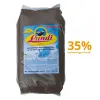
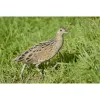

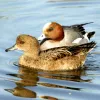


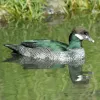 Floatable special rearing feed for all ornamental waterfowl species, even for problematic eaters. This ideally balanced complete feed with 35% protein content forms the basis for healthy growth and lifelong vitality. Made exclusively from wholesome and selected raw materials, Lundi Micro is also ideally suited for the year-round feeding of waterfowl.
Floatable special rearing feed for all ornamental waterfowl species, even for problematic eaters. This ideally balanced complete feed with 35% protein content forms the basis for healthy growth and lifelong vitality. Made exclusively from wholesome and selected raw materials, Lundi Micro is also ideally suited for the year-round feeding of waterfowl.
- Maintenance food:
-


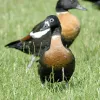


Floating full food for all sea ducks, green ducks, eider ducks and geese, especially in the moulting and breeding phase ideally suited. Packed with wholesome raw materials, natural vitamins and trace elements, this performance food with a protein content of 30% forms the basis for lifelong vitality.
- Regulation:
- CITES Appendix A
- Regulation:
These species must always be accompanied by a CITES document. This includes the date of birth, the species name, gender and other information such as the ring number and the diameter of the ring that are relevant to identify the animal. This international passport must always stay with the animal, wherever it goes. Holders of CITES A species must keep a register (bookkeeping) in which they include the number of the CITES document, generic name, the date of purchase and any later sale, obtained young animals and the date of death. An example of this register can be downloaded from www.cites.org. In order to obtain offspring from CITES A birds, they must be ringed with a recognized, registered ring with a fixed diameter. As long as the offspring of birds remain in your possession, at the address that is the same as the parent birds are, a CITES document is not yet necessary for them. As soon as you want to redo the offspring to another owner, you must provide the birds with a CITES document. This is based on the CITES documents of both parent birds. If the CITES documents are in your possession, the offspring may leave your address, NOT before! In your registration you then record where the animals concerned reside.




